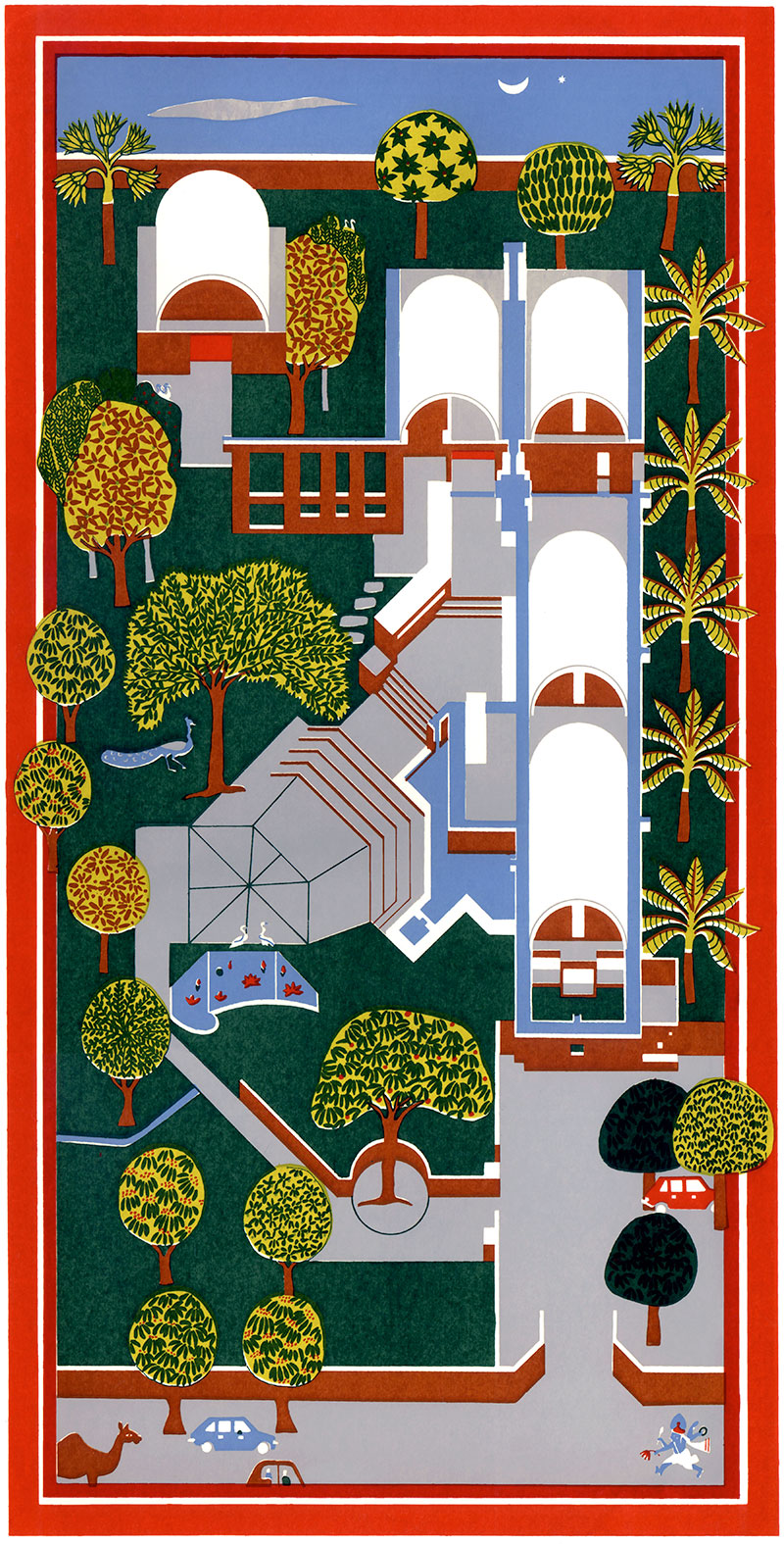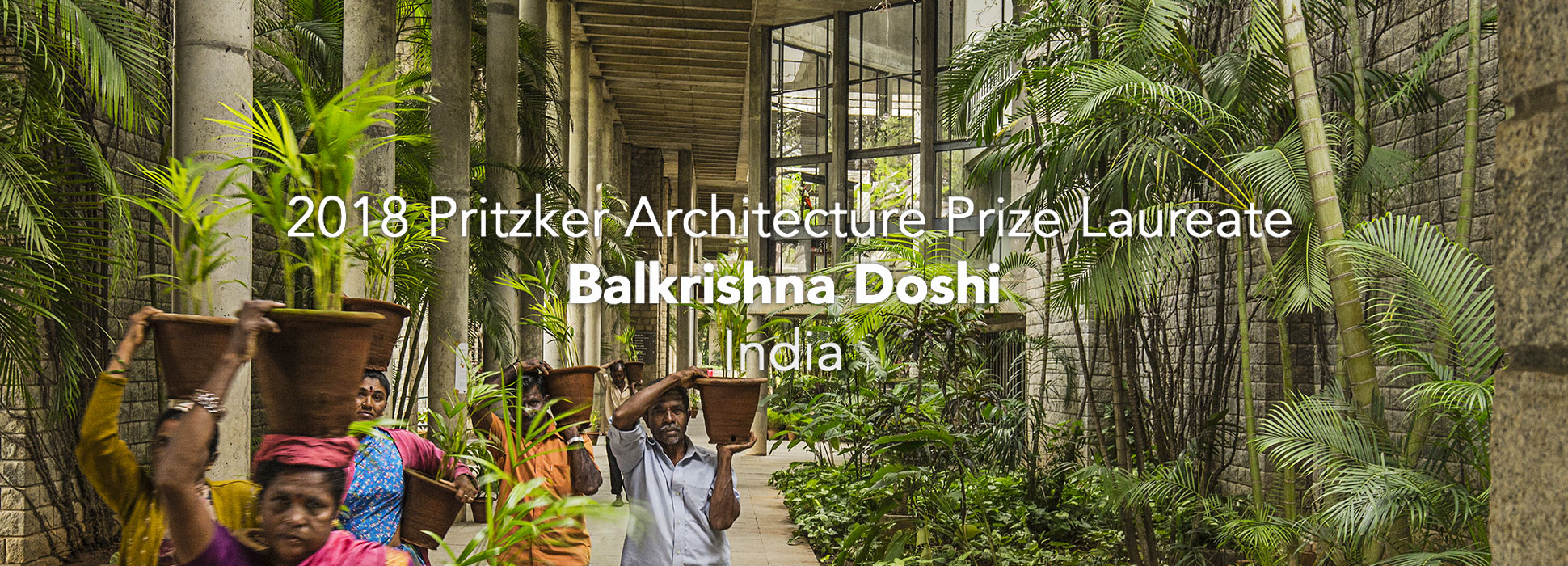
Извор: The Pritzker Architecture Prize
Индијски архитекта Балкришна Виталдас Доши (Balkrishna Vithaldas Doshi) именован је лауреатом Прицкер награде (Pritzker Prize) за 2018. годину, најпрестижније награде у архитектури.
Balkrishna Doshi, један од најутицајнијих индијских архитеката 20. века, је 45. добитник Прицкер награде. Он је први индијски архитекта који је награђен овим признањем.
Doshi и његов студио Vastu-Shilpa имају портфолио распона више од 70 година, који укључује и сарадње са Le Corbusier-ом и Louis Kahn-ом.
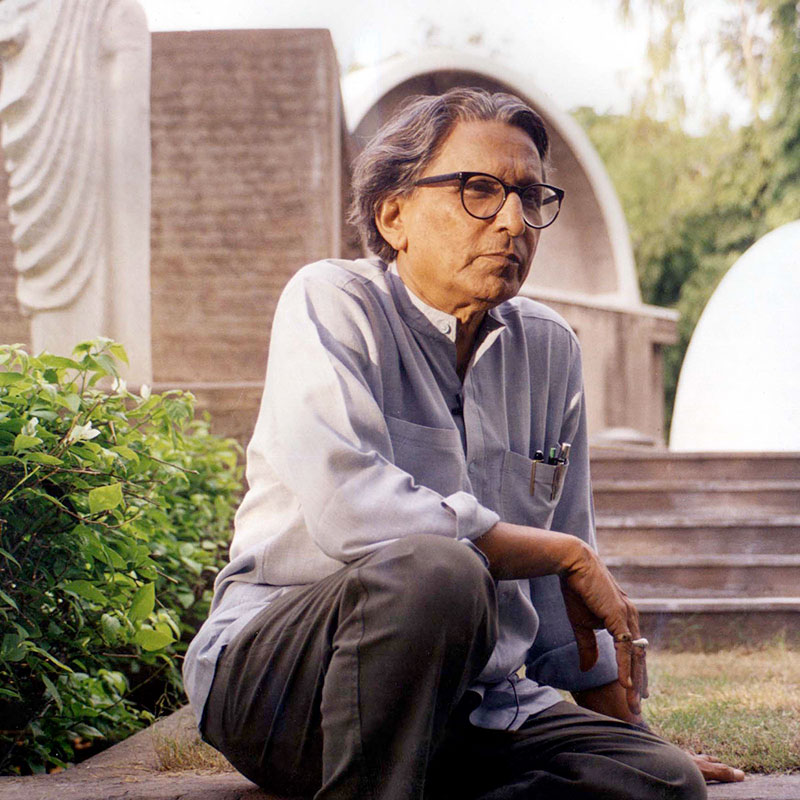
Balkrishna Doshi | Фото © VSF
Архитекта, урбанистички планер и педагог у последњих 70 година, Doshi је био инструменталан у обликовању дискурса архитектуре широм Индије и на међународном нивоу. Под утицајем мајстора архитектуре 20. века Charles-Édouard Jeanneret-а, познатијег као Le Corbusier, и Louis Kahn-а, Doshi је био у могућности да интерпретира архитектуру и трансформише је у изграђене радове који поштују источну културу, а истовремено побољшавају квалитет живота у Индији. Његов етички и лични приступ архитектури додирнуо је животе сваке друштвено-економске класе у широком спектру жанрова од педесетих година 20. века.
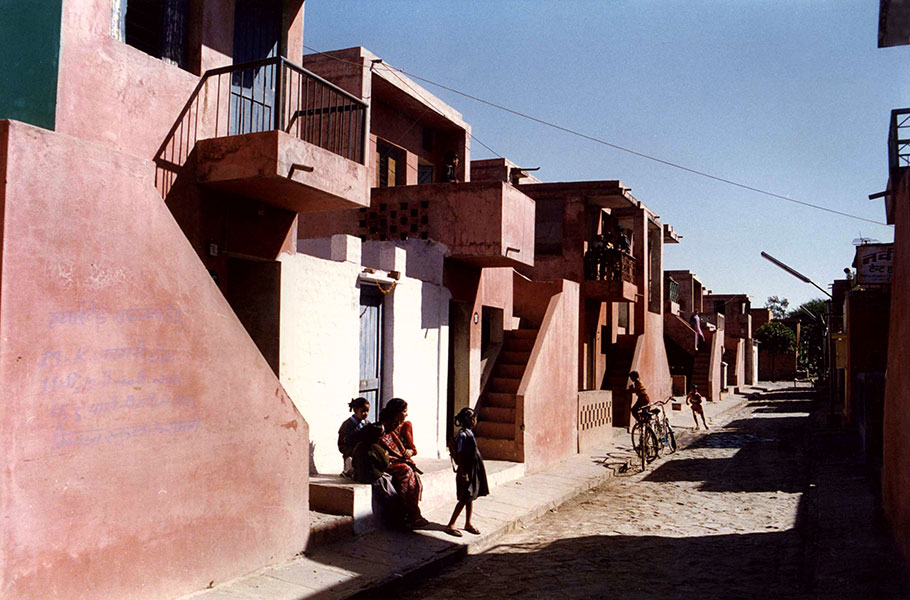
Balkrishna Doshi – Aranya Low Cost Housing, Индор, Индија, 1989. | Фото © VSF
“Моји радови су продужетак мог живота, филозофије и снова који покушавају да створе ризницу архитектонског духа. Ову престижну награду дугујем мом гуруу Le Corbusier-у. Његова учења довела су ме до преиспитивања идентитета и присиљавала ме да откријем нови регионално усвојени савремени израз за одрживо холистичко станиште “, коментарише Doshi.
Он наставља: “са свом својом понизношћу и захвалношћу желим да се захвалим Жирију Награде Pritzker за ово дубоко дирљиво и испуњавајуће признање за мој рад. Ово потврђује моје уверење да ‘живот слави када се стил живота и архитектура споје’.”
Doshi-јева архитектура истражује односе између основних потреба људског живота, повезаности са самим собом и културом, и разумевања друштвених традиција, у контексту места и његовог окружења, и кроз одговор на модернизам. О сећањима на детињство, од ритмова времена до звука звона храма, говори његов дизајн. Он описује архитектуру као продужетак тела, а његова способност да пажљиво одговори на функцију која у исто време узима у обзир климу, пејзаж и урбанизацију, представља се кроз његов избор материјала, преклапање простора и коришћење природних и хармонизирајућих елемената.
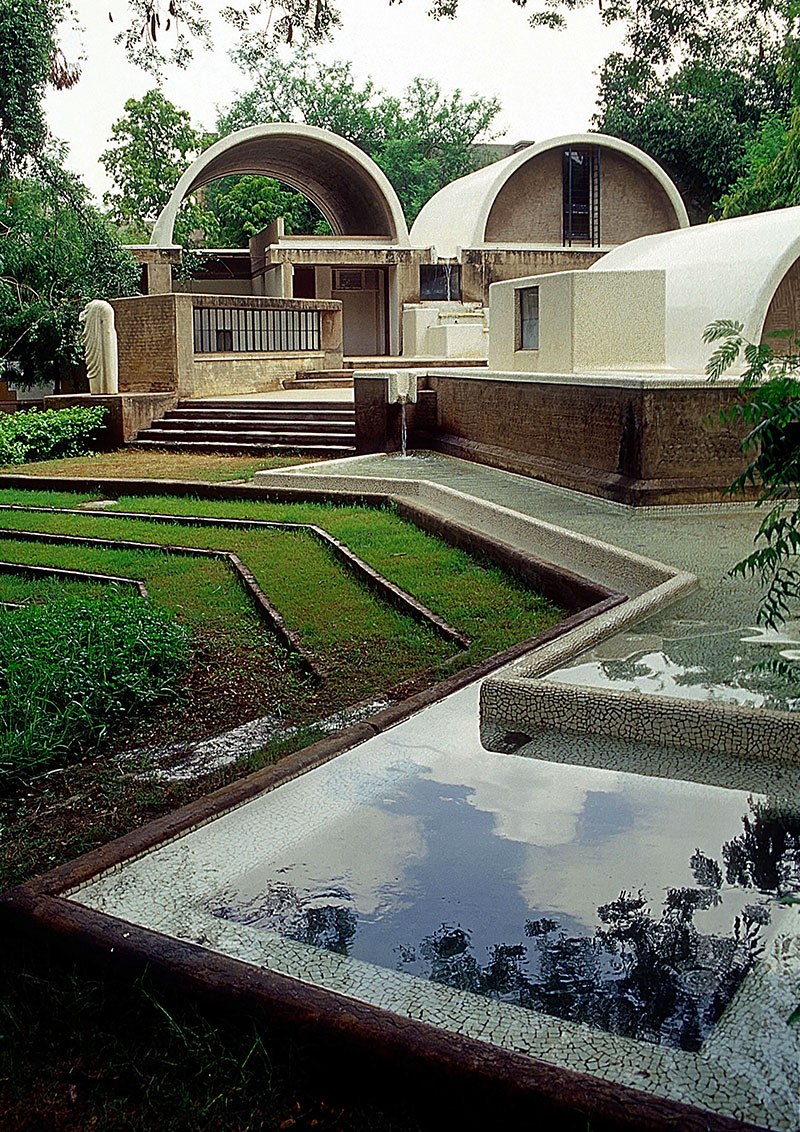
Balkrishna Doshi – Sangath, студио архитекте, Ахмедабад, Индија, 1980. | Фото © VSF
“Професор Doshi је рекао: ‘Дизајн претвара склоништа у домове, становање у заједнице и градове у магнете могућности’”, коментарише господин Pritzker. “Животни рад Balkrishna Doshi-ја истински наглашава мисију Награде – демонстрира уметност архитектуре и непроцењиву службу човечанству. Част ми је да за 40-годишњицу ове награде представим архитекту који нам је свима допринео више од 60 година службе.”
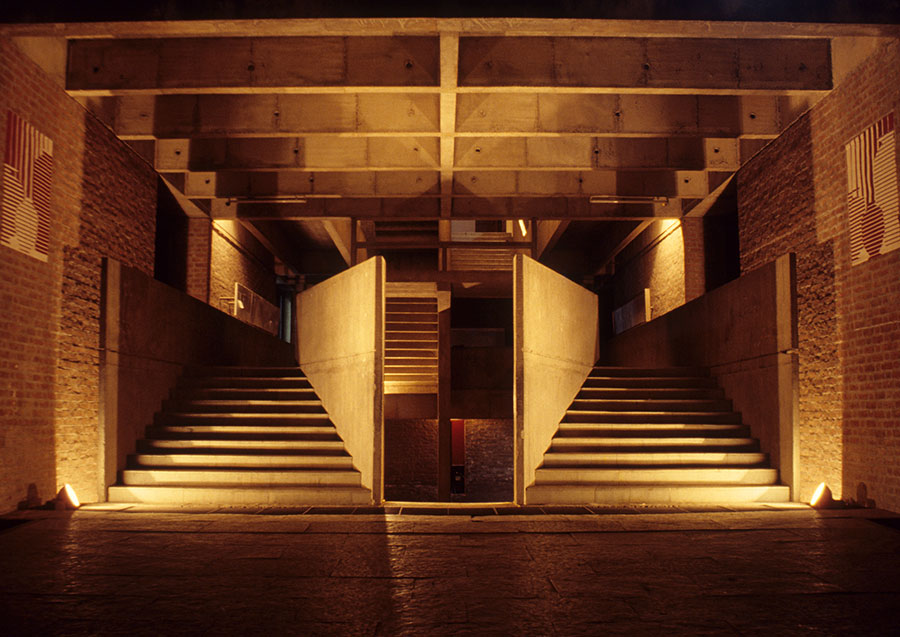
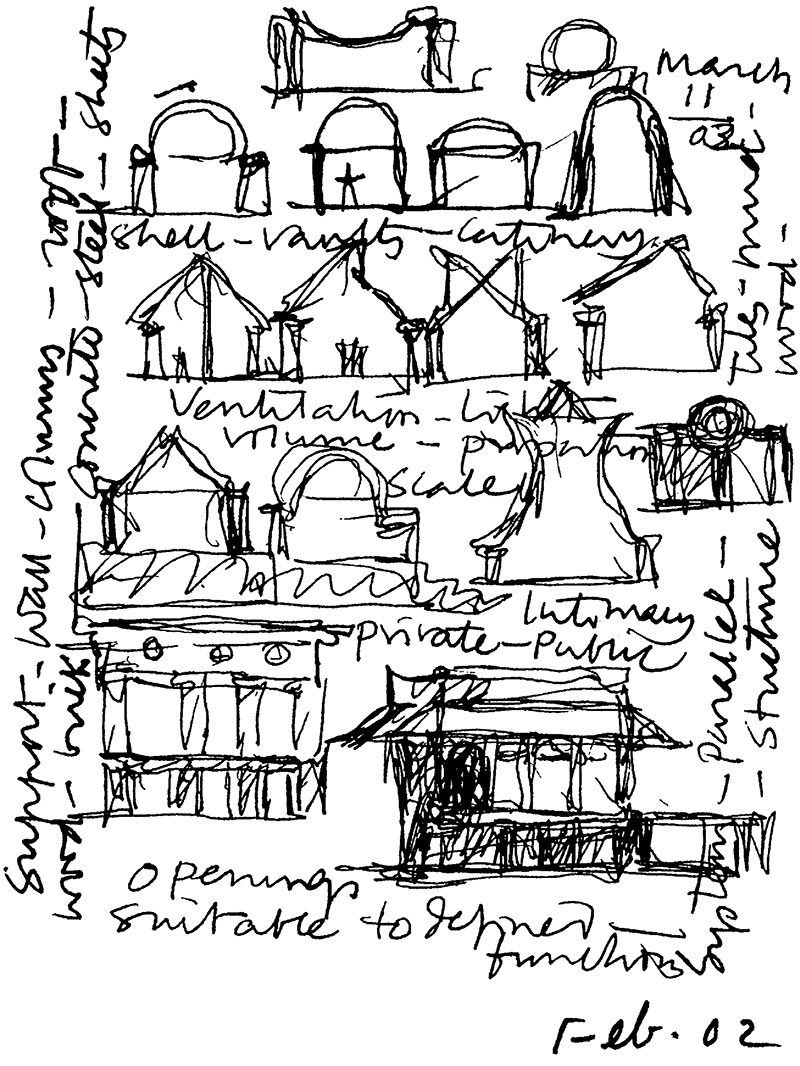
Balkrishna Doshi – Centre for Environmental Planning & Technology, Ахмедабад, Индија, 1966–2012. (из више фаза) | Фото и скица © VSF
Архитект је дизајнирао социјално становање Aranya Low Cost Housing (Индор, 1989), у коме је тренутно смештено преко 80.000 особа кроз систем кућа, дворишта и лавиринт унутрашњих стаза. Преко 6.500 резиденција креће се од скромних једнособних станова до пространих кућа, у којима су смештени станари са ниским и средњим приходима. Преклапајући слојеви и прелазна подручја подстичу флуидне и прилагодљиве животне услове, уобичајене у индијском друштву.
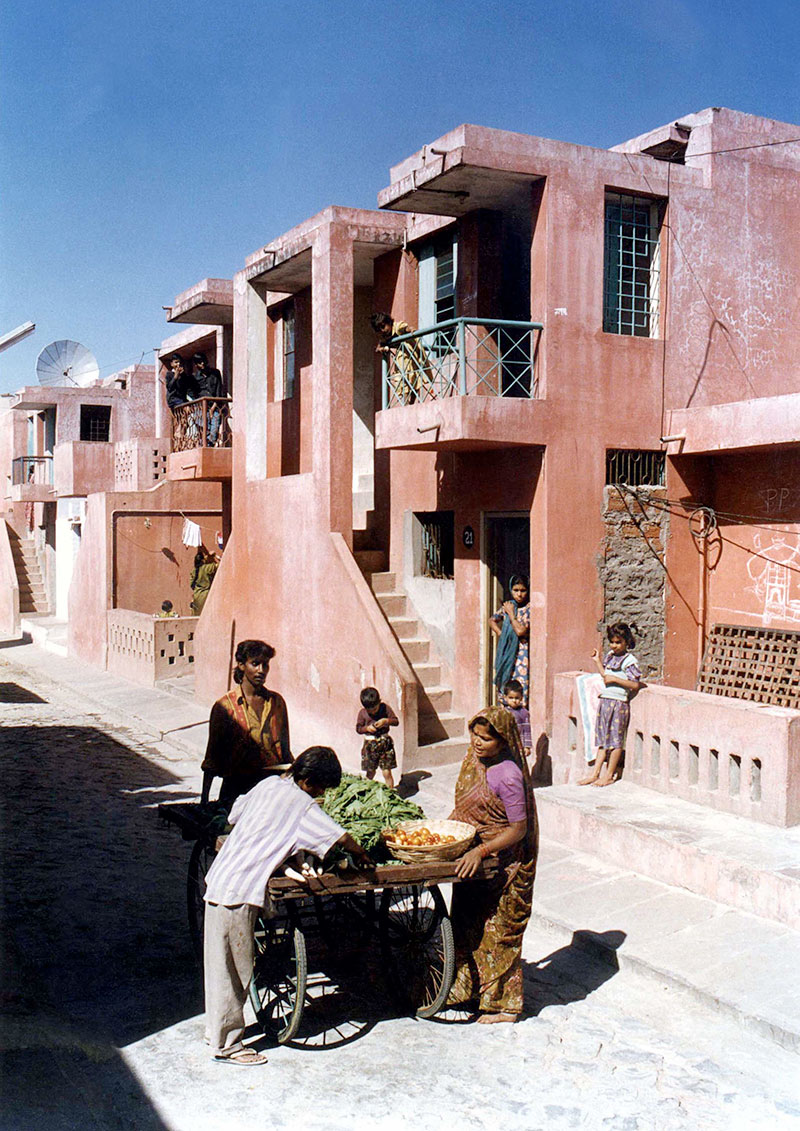
Balkrishna Doshi – Aranya Low Cost Housing, Индор, Индија, 1989. | Фото © John Paniker
Архитектура Balkrishna Doshi-ја је и поетична и функционална. Индијски институт за менаџмент (Бангалор, 1977-1992), инспирисан традиционалним индијским градовима и храмовима попут лавиринта, организован је као међусобно повезивање зграда, судница и галерија. Такође обезбеђује различите просторе заштићене од вруће климе. Широк спектар зидова и огромних коридора испуњених зеленилом омогућавају посетиоцима да буду истовремено у затвореном и на отвореном простору. Док људи пролазе кроз зграде и просторе, Doshi их позива да доживљавају своје окружење и такође сугерише могућност трансформације.
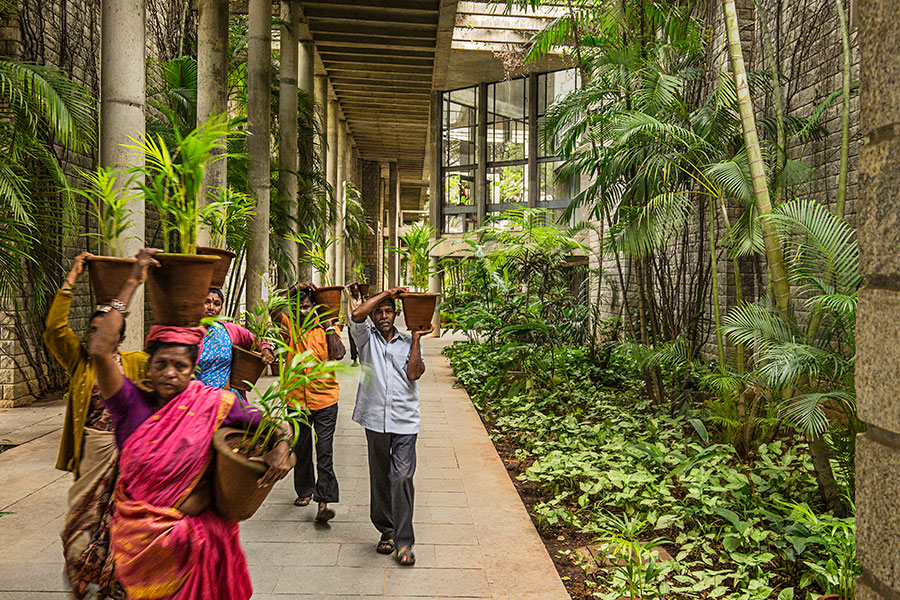
Balkrishna Doshi – Indian Institute of Management, Бангалор, Индија, 1977–1992. (из више фаза) | Фото © VSF
Прочитајте образложење жирија Прицкерове награде за 2018. годину у оригиналу:
Indian architect Balkrishna Doshi has continually exhibited the objectives of the Pritzker Architecture Prize to the highest degree. He has been practicing the art of architecture, demonstrating substantial contributions to humanity, for over 60 years. By granting him the award this year, the Pritzker Prize jury recognizes his exceptional architecture as reflected in over a hundred buildings he has realized, his commitment and his dedication to his country and the communities he has served, his influence as a teacher, and the outstanding example he has set for professionals and students around the world throughout his long career.
Doshi, as he is fondly called by all who know him, worked with two masters of the 20th century—Le Corbusier and Louis Kahn. Without a doubt, Doshi’s early works were influenced by these architects as can be seen in the robust forms of concrete which he employed. However, Doshi took the language of his buildings beyond these early models. With an understanding and appreciation of the deep traditions of India’s architecture, he united prefabrication and local craft and developed a vocabulary in harmony with the history, culture, local traditions and the changing times of his home country India.
Over the years, Balkrishna Doshi has always created an architecture that is serious, never flashy or a follower of trends. With a deep sense of responsibility and a desire to contribute to his country and its people through high quality, authentic architecture, he has created projects for public administrations and utilities, educational and cultural institutions, and residences for private clients, among others.
He undertook his first project for low-income housing in the 1950s. Doshi stated in 1954, “It seems I should take an oath and remember it for my lifetime: to provide the lowest class with the proper dwelling.” He fulfilled this personal oath in projects such as Aranya Low-cost Housing at Indore, 1989, in central-west India and the Co-Operative Middle Income Housing, Ahmedabad, India of 1982, and many others. Housing as shelter is but one aspect of these projects. The entire planning of the community, the scale, the creation of public, semi-public and private spaces are a testament to his understanding of how cities work and the importance of the urban design.
Doshi is acutely aware of the context in which his buildings are located. His solutions take into account the social, environmental and economic dimensions, and therefore his architecture is totally engaged with sustainability. Using patios, courtyards, and covered walkways, as in the case of the School of Architecture (1966, now part of CEPT) or the Madhya Pradesh Electricity Board in Jabalpur (1979) or the Indian Institute of Management in Bangalore (1992), Doshi has created spaces to protect from the sun, catch the breezes and provide comfort and enjoyment in and around the buildings.
In the architect’s own studio, called Sangath (Ahmedabad, India, 1980), we can see the outstanding qualities of Balkrishna Doshi’s approach and understanding of architecture. The Sanskrit word Sangath means to accompany or to move together. As an adjective, it embodies that which is appropriate or relevant. The structures are semi-underground and totally integrated with the natural characteristics of the site. There is an easy flow of terraces, reflecting ponds, mounds, and the curved vaults which are distinguishing formal elements. There is variety and richness in the interior spaces that have different qualities of light, different shapes as well as different uses, while unified through the use of concrete. Doshi has created an equilibrium and peace among all the components—material and immaterial—which result in a whole that is much more than the sum of the parts.
Balkrishna Doshi constantly demonstrates that all good architecture and urban planning must not only unite purpose and structure but must take into account climate, site, technique, and craft, along with a deep understanding and appreciation of the context in the broadest sense. Projects must go beyond the functional to connect with the human spirit through poetic and philosophical underpinnings. For his numerous contributions as an architect, urban planner, teacher, for his steadfast example of integrity and his tireless contributions to India and beyond, the Pritzker Architecture Prize Jury selects Balkrishna Doshi as the 2018 Pritzker Laureate.
Jury Members:
Glenn Murcutt, Chair
Stephen Breyer
André Aranha Corrêa do Lago
The Lord Palumbo
Richard Rogers
Sejima Kazuyo
Benedetta Tagliabue
Ratan N. Tata
Wang Shu
Martha Thorne, Executive Director
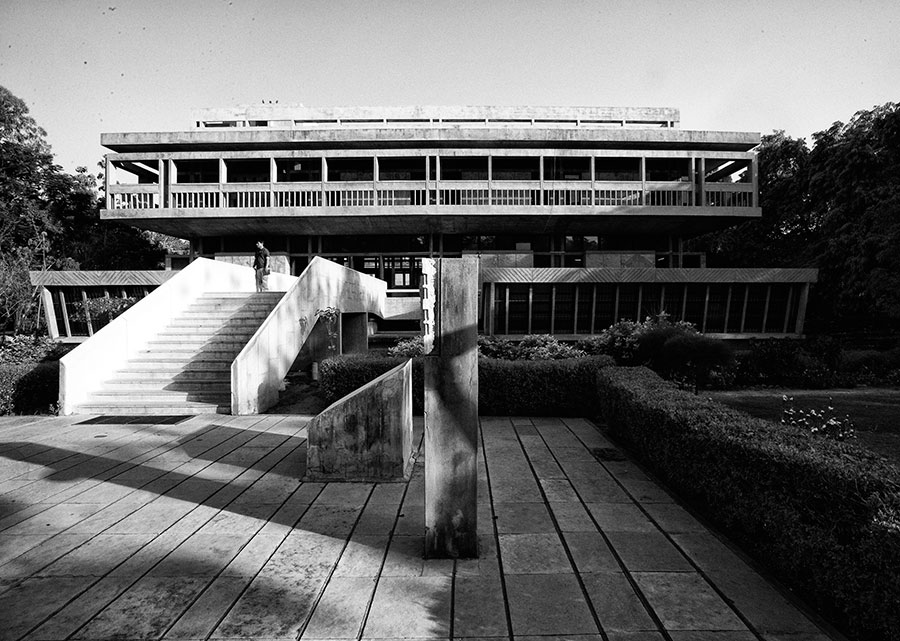
Balkrishna Doshi – Institute of Indology, Ахмедабад, Индија, 1962. | Фото © VSF
Међународна награда, направљена по узору на Нобелову награду, је успостављена 1979. године у част рада живих архитеката. Прошлогодишњи добитници су Rafael Aranda, Carme Pigem и Ramon Vilalta – RCR Arquitectes. Alejandro Aravena, Frei Otto, Rem Koolhaas, Zaha Hadid и Toyo Ito су међу претходним добитницима ове награде.
Све информације о Прицкеровој награди можете прочитати на The Pritzker Architecture Prize, а фотографије најважнијих радова Balkrishna Doshi-ја, лауреата Прицкер награде за 2018. годину, можете погледати овде:
Balkrishna Doshi – Лауреат Прицкер награде за 2018.